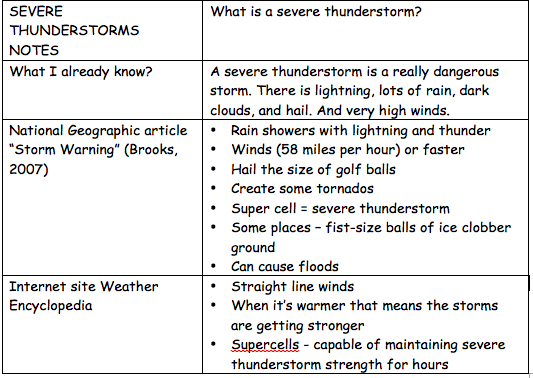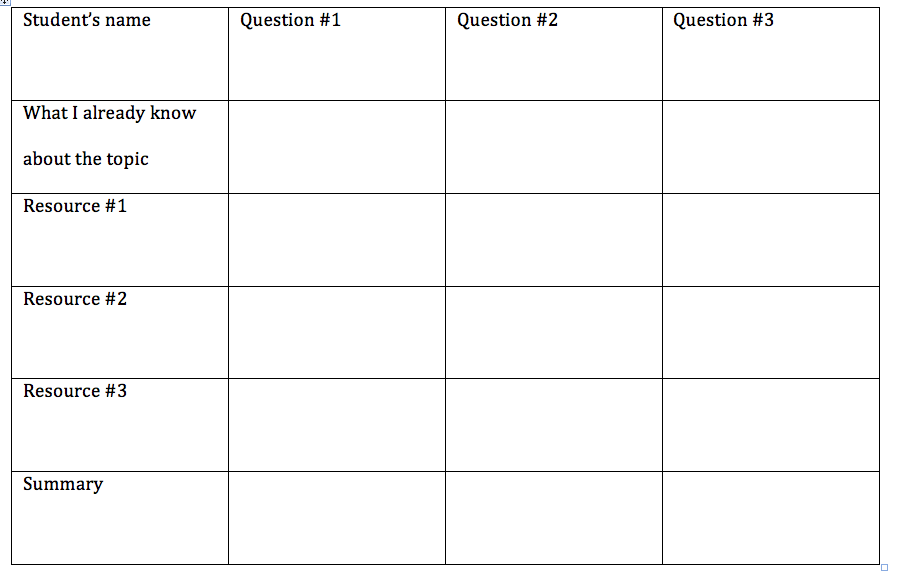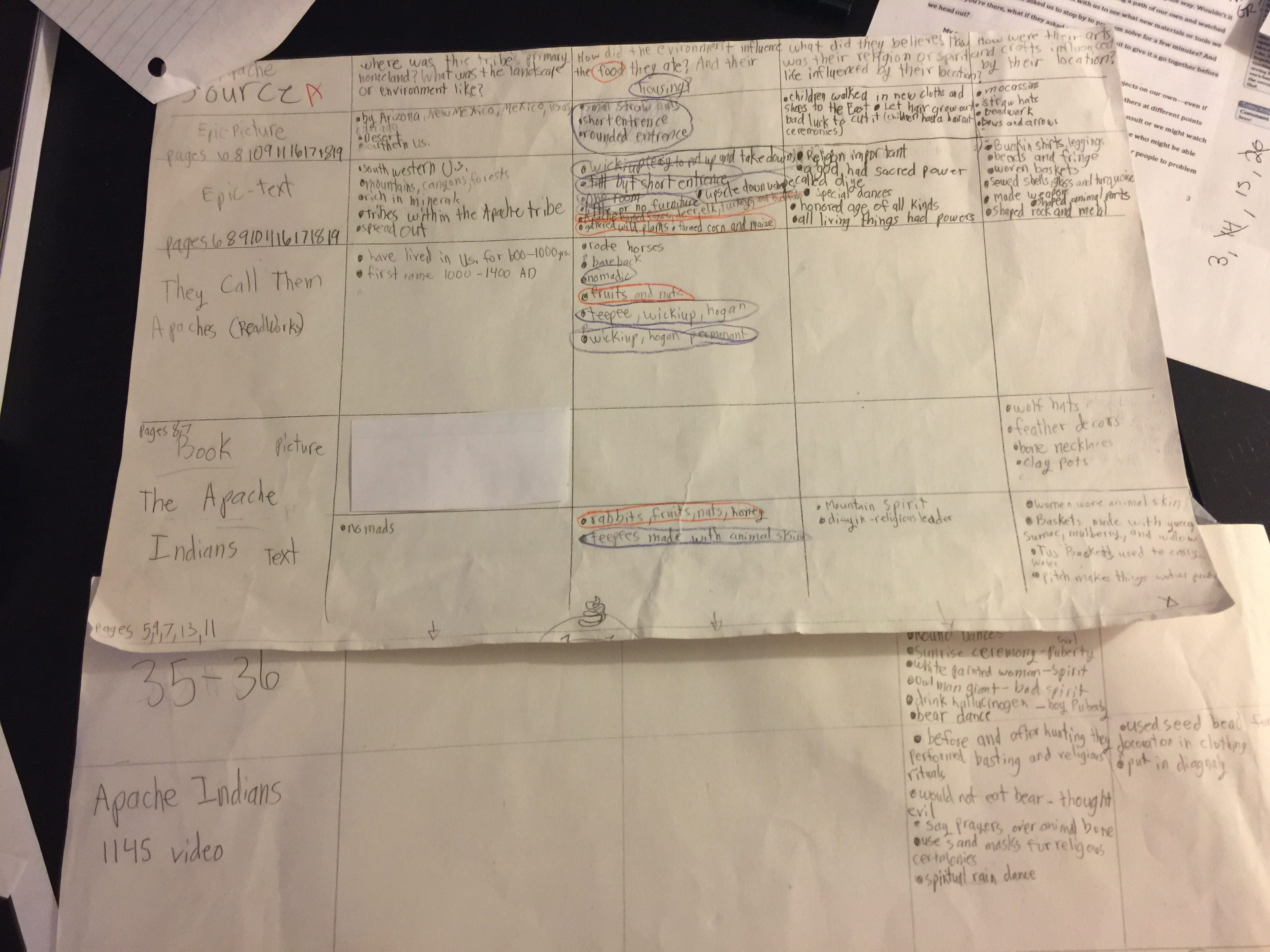If students are reading multiple texts on a topic and taking notes on each of those sources, I require that (or strongly suggest) they write notes in phrases–just enough words to help them remember what they learned or what the author was saying or the student’s response to information. In most cases, I strongly encourage them to NOT write their notes in sentences.
Here’s why –
- If they write notes in sentences, the student may be easily tempted to just copy the sentences they are reading in a source and not do a lot of thinking. (How many of your students do this??????) Instead, we want them to think about what the author is trying to say or what they are learning from the source and then determine what is really important to remember. Then they can jot down a few of the author’s words or their own paraphrasing of the text.
- If they’ve already written sentences in their notes, they frequently just want to lift those sentences and insert them into their writing or presentation or whatever. Then they have missed an opportunity to combine details from multiple sources. When students are done taking notes from multiple sources, we want them to look across their notes and combine ideas from multiple sources. They have to be able to look at their notes and categorize details. Oh, all of these details are about what the raccoon eats! Or Yes! I see several details on how the Cherokee used their environment to create art. They may want to draw arrows between notes or circle details they want to combine with the same color of pencil. Conceptually, this is harder to do if they are looking across “sentences” versus words and phrases.
Here’s an example of what I mean by notes written in phrases (versus complete sentences)–

OKAY…I’M LEAVING OUT A LOT HERE like the fact that taking notes is a complex task. The students need to know their purpose for researching, reading, taking notes. They need clear questions they are trying to answer or grapple with as they read and take notes like How did this Native American tribe use resources in their environment to survive? or How did the members of the Jewish resistance exhibit courage during the Holocaust? or How can we be prepared for severe weather? They need a way to organize their notes like using an inquiry chart (Hoffman, 1992). See example below. (If you need more info on teaching with inquiry charts, see Chapter 8 in my book Close Reading of Informational Texts). AND they need examples of good texts to use as sources or access to a vetted set of sources before they go off to find their own. And, and, and…
Example of an inquiry chart…

Below is an example of a student’s inquiry chart. This fifth grade student was researching the Apache. Notice the questions across the top that drive her decisions about what to write in her notes. Her sources are listed on the left hand side. She’s circled details she wants to combine with a colored pencil.

Many, many students will struggle when they go to synthesize and write or plan for presenting if they have to look across a bunch of “sentences.” Many, many students will be tempted to just copy the sentences from their sources! Encourage your students to take bulleted notes, short phrases or just enough information that they can look at it and remember what they learned.
For more information on how I use inquiry charts, read an article I wrote for ASCD’s EL entitled The Case for Multiple Texts.
My Nurturing Informed Thinking also has a chapter focused on inquiry charts.
Hope this helps.
S
UPDATED JANUARY 2025
